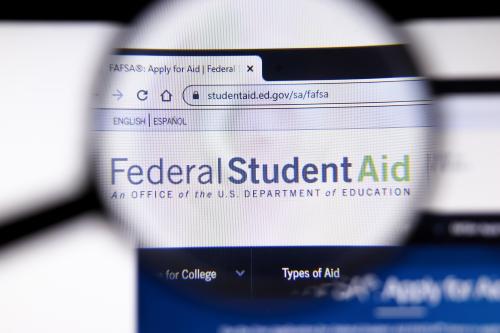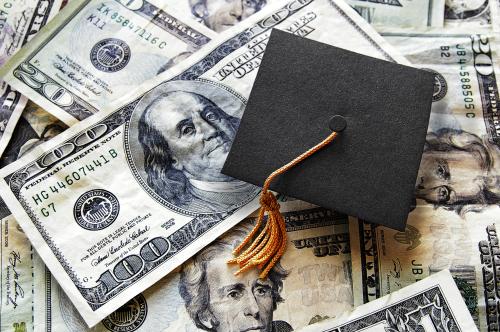In recent decades, the cost of going to college has skyrocketed, more than doubling in inflation-adjusted terms since the 1960s. There are three ways to make college more affordable. The first is for government or philanthropy to pick up more of the tab. The second is by borrowing the money in the hopes that the increased earnings that graduates receive will enable the borrower to pay back the loan. The third is by improving the productivity of the sector so that students learn as much (or more) but at a lower (or the same) cost.
So far, students and their families have coped by relying more on assistance from government or philanthropy or by borrowing large sums of money. While state governments have been cutting back on subsidies to community colleges and state universities, the federal government has taken up some of the slack and is now spending a total of $137 billion a year on subsidized loans, grants, and tax credits. Borrowing has also risen sharply. Outstanding student loan debt is now over $1 trillion and almost a sixth of borrowers are more than 90 days delinquent on their payments. Continuing to rely on taxpayer support during a time of fiscal constraint, and on the ability of students to borrow large sums of money with no certainty than they can repay their debts is not a sustainable policy.
We must address the third reason for rising costs: the failure to improve the productivity of the higher education sector.
It’s about costs
In a recent series of articles for the Washington Post, Dylan Matthews has analyzed the causes of rising costs in this sector. He notes that the story varies depending on what type of school is involved. Community colleges have done a reasonable job of restraining costs but have been hit by the decline in state aid, necessitating that they shift costs onto students in the form of higher tuition. In the meantime, research universities, especially those in the private sector, are spending a lot more, evidently doing little or nothing to restrain their costs.
According to the Delta Cost Project, between 1995 and 2006, average expenditures per full-time student increased from $27,912 to $31,288 or by 12 percent (inflation-adjusted) at research-oriented schools in the public sector (think Berkeley or Rutgers or the University of Michigan) while expenditures in the private sector (think Harvard, Stanford, or Yale) increased from a whopping $54,750 to $63,456 or by 16 percent. Among non-research schools without doctoral programs, such as liberal arts colleges, spending was either flat or declined a bit over this same period.
All of these institutions could do more to control cost growth but the big research-oriented institutions stand out as especially vulnerable to the cost disease. Clearly, one thing that makes them expensive is their research orientation which means lots of faculty and other staff devoted to research and not to teaching. There is an old argument that says the best teachers are those who are doing cutting edge work in their field and that only they can convey to their students the excitement of new discoveries. Too often, however, these are professors who spend very little time in the classroom and what time they do spend is viewed as secondary to their research. Perhaps it’s time to fund research more directly and not ask students and their families to cross-subsidize what is a thinly-disguised research enterprise. If that enterprise is valuable, it deserves its own separate but transparent funding.
Among all of these higher education institutions, personnel costs loom large. They could cut back on faculty-student ratios by using more online resources to expose their students to the best thinking in the country (or the world). This would free up existing faculty time to provide the more personalized and hands-on attention that most students need or want, while saving money in the process.
The government’s plan
The good news on this front is that the President appears to recognize the fact that the cost of higher education is excessive and has suggested some ways in which we can tie government funding more to performance at the institutional level.
Performance will be difficult to measure but could include not just enrollments, credits accumulated, or graduation rates but what students actually learn while they are in college as measured by a test or series of tests at the end of the process. This is a radical but welcome idea. Not only would it help to ascertain the value of a college education but in this era of grade inflation it would provide employers with a more objective measure of what recent graduates have learned and how they are likely to perform on the job.



Commentary
Op-edHow to Make College More Affordable? Improve Productivity
September 4, 2013